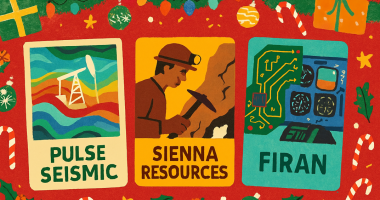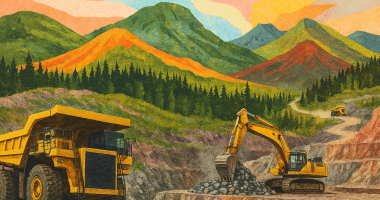- A deficit of about 4.7 million metric tonnes of copper by 2030 has been predicted
- The copper supply-demand mismatches present a fantastic case for copper miners by the back half of this decade
- Canada has one of the largest nickel reserves in the world
- With Canada’s battery metals reserves, manufacturers should be looking to partner with Canadian miners
At The Market Herald Canada, we’re following the battery metals story on all fronts. Our Electrifying Opportunities Thematica report focuses on the “battery metals” that go into lithium-ion batteries and examines the individual metals markets with some guidance on where the best opportunities can be found. As you can see, investing in copper and nickel presents an interesting opportunity.
Used in lithium ion batteries, copper and nickel have strong cases on the battery metal demand curve as we move forward to net zero in 2050, specifically in the movement for increased EVs. Earlier this year, we spoke with with Chris Kerlow CFA, senior portfolio manager at Canaccord Genuity Wealth Management Canada, to discuss the case for investing in copper and nickel.
TMH: Which battery metal are you most excited about for 2023 and why?
Kerlow: For 2023, I’m most excited about copper, this industrial metal, albeit not used deeply inside batteries themselves. It conducts the electricity from one place to another, particularly in the renewable energy integration. So even outside of battery metals and things like wind and solar, we’re going to need to expand drastically on those capacities to supply the electricity to our grid.
Copper miners are already making strong margins at today’s prices and a deficit of about 4.7 million metric tonnes by 2030 has been predicted. You’ll need to see about $100 billion of investment to get to that. And copper miners right now really aren’t investing in their mines. They’re just trying to extend the useful life of most mines. Right now, the lead time from discovery to production for a copper mine is about 16.2 years.
And there’s just a large gap between the profits and the capital spending. We’re seeing only about 12 per cent of EBITDA from copper miners going into long-term projects. That’s half above what the long-term average was historically. And so we see these supply-demand mismatches really coming to fruition by the back half of this decade and (it’s) presented a fantastic case for copper miners.
TMH: All right. And nickel demand is set to grow by 123 per cent by 2035. Aluminum and steel by over 50 per cent and copper by about 26 per cent. How is Canada positioned for this growth in the battle of battery metals industry?
Kerlow: Canada has one of the largest, if not the largest nickel reserves in the world, or a top five reserve country in both copper and lithium. So if you manufacture, others are looking to Canada to partner with our mining companies here. Again, Canada’s critical minerals strategy will be extremely important in achieving those goals. And so I think Canada is quite well-positioned to take advantage of this growth in demand by these aforementioned minerals.
TMH: And let’s talk about the different prices for different commodities and how it is the way they are sourced that affects the price.
Kerlow: So right now, a lot of commodities are just priced based on one specific commodity, depends on the grades in the different areas you get it from. But I do think in the world of what we live in with environmental, social and governance (ESG) at the forefront, we are going to see a bigger differentiation between those commodity prices as well as decentralized finance, allowing the sourcing to be very transparent of where these came from.
I think you’ll start to see lower prices in areas that are not following as strict of ESG standards versus other ones in the world that are putting the environment first in the exploration and mining of these raw materials, which takes a lot of heat from the ESG community but is a necessary evil to get us to our long-term goals of net zero.
We’re not going to get there without kind of a new technological advancement into the electrification of our power grid.
Looking for more about investing in copper and nickel? Copper is up 0.06%, trading at US$3.58 and nickel is up 1.71% trading at US$18,466.50 per tonne.
For more on meeting net zero by 2050 and trending battery news stories, check out Stockhouse’s battery metals page.
For more of this interview, check out The Market Herald’s Thematica – electryfiying opportunities report on battery metals.
The material provided in this article is for information only and should not be treated as investment advice. For full disclaimer information, please click here.



